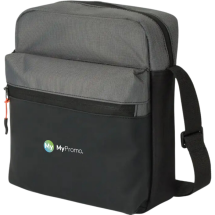Silk
What is Silk?
Silk is a luxurious natural fibre produced by silkworms. It is highly valued for its softness, sheen, and strength, making it a sought-after material in both the manufacturing and promotional gifts industries. Silk's importance lies in its versatility and the premium feel it provides, which enhances the quality of various products.Historically, silk has a rich heritage that dates back to ancient China, where it was first developed around 2700 BC. The Chinese closely guarded the secrets of silk production for centuries, which made it a valuable commodity along the Silk Road trade routes. Eventually, silk production spread to other parts of Asia and Europe, leading to the widespread appreciation of this exquisite material.
The process of producing silk begins with the cultivation of mulberry trees, which provide the primary food source for silkworms. Silkworms spin cocoons from a continuous silk thread, which is then carefully harvested. The cocoons are soaked in water to soften the sericin, the protein that holds the silk fibres together. Once softened, the long silk fibres are unwound and spun into threads, which can be woven into fabric.
The Unique Properties and Characteristics of Silk
Silk is known for its exceptional softness and smooth texture, making it incredibly comfortable against the skin. It has a natural sheen that gives it a luxurious appearance. Silk is also surprisingly strong for such a fine fibre, offering durability in various applications. Additionally, silk is hypoallergenic and highly breathable, which helps regulate body temperature, making it suitable for both warm and cool climates.
Common Applications of Silk
Silk is commonly used in the fashion industry for making elegant garments such as dresses, blouses, ties, and scarves. Its luxurious feel and appearance make it a popular choice for high-end clothing and accessories. In the world of home décor, silk is used for items like bed linens, curtains, and upholstery, adding a touch of sophistication to interior spaces. For promotional products, silk is often used for custom ties, scarves, and branded handkerchiefs, which can be personalised with logos and designs to create premium gifts.
Advantages of Using Silk in Manufacturing
One of the primary advantages of silk is its luxurious feel and high aesthetic appeal, which can enhance the perceived value of products. Silk's strength and durability ensure that items made from it can withstand regular use while maintaining their quality. The hypoallergenic nature of silk makes it suitable for people with sensitive skin, and its breathability contributes to comfort in various climates. Additionally, silk is biodegradable and environmentally friendly, aligning with sustainable manufacturing practices.
Silk vs. Other Materials
Compared to other fabrics, silk stands out for its natural sheen and soft texture. While cotton and synthetic fibres like polyester can be durable and versatile, they lack the luxurious feel that silk provides. Silk is more breathable than many synthetic materials, making it a preferred choice for clothing in warm climates. However, silk is generally more expensive and requires more delicate care than other fabrics, which might limit its use in some applications.
Potential Challenges with Silk
Despite its many advantages, silk does have some limitations. Its delicate nature means it requires careful handling and special care when cleaning, often necessitating dry cleaning or gentle hand washing. Silk is also prone to damage from exposure to sunlight and perspiration, which can weaken the fibres over time. Additionally, the production of silk can be labour-intensive and costly, which is reflected in the higher price of silk products.
In summary, silk is a versatile and luxurious material with a rich history and a wide range of applications. Its unique properties make it an ideal choice for both fashion and promotional products, offering a blend of elegance, comfort, and durability. While there are some challenges associated with its use, the benefits of silk ensure its continued popularity and value in various manufacturing sectors.
| Aspect | Details |
|---|---|
| Properties and Characteristics | Exceptional softness, smooth texture, natural sheen, strong for a fine fibre, hypoallergenic, highly breathable, suitable for warm and cool climates. |
| Common Applications | Fashion garments (dresses, blouses, ties, scarves), home décor (bed linens, curtains, upholstery), promotional products (custom ties, scarves, handkerchiefs). |
| Advantages in Manufacturing | Luxurious feel, high aesthetic appeal, enhances perceived value, strength and durability, hypoallergenic, breathable, biodegradable, environmentally friendly. |
| Comparison with Other Materials | More breathable and softer than many synthetics, more luxurious feel compared to cotton and polyester, generally more expensive, requires delicate care. |
| Potential Challenges | Requires careful handling and special care (dry cleaning or gentle hand washing), prone to damage from sunlight and perspiration, labour-intensive and costly production. |
What is silk made from?
Silk is made from the natural fibres produced by silkworms. The most common type of silk is derived from the cocoons of the larvae of the mulberry silkworm.
What are the main properties of silk?
Silk is known for its exceptional softness, smooth texture, natural sheen, strength, and durability. It is also hypoallergenic and highly breathable, making it comfortable to wear in various climates.
How is silk produced?
The production of silk begins with the cultivation of mulberry trees, which provide food for silkworms. Silkworms spin cocoons from a continuous silk thread. These cocoons are harvested, soaked in water to soften the sericin, and then the silk fibres are unwound and spun into threads that can be woven into fabric.
How should silk be cared for?
Silk requires delicate handling. It is often recommended to dry clean silk garments, but they can also be gently hand washed in cold water with mild detergent. Avoid wringing or twisting the fabric and dry it flat or hang it to dry away from direct sunlight.
What are the challenges associated with silk?
Silk is delicate and requires special care when cleaning. It can be damaged by sunlight and perspiration, which can weaken the fibres over time. The production of silk is also labour-intensive and costly, resulting in higher prices for silk products.

